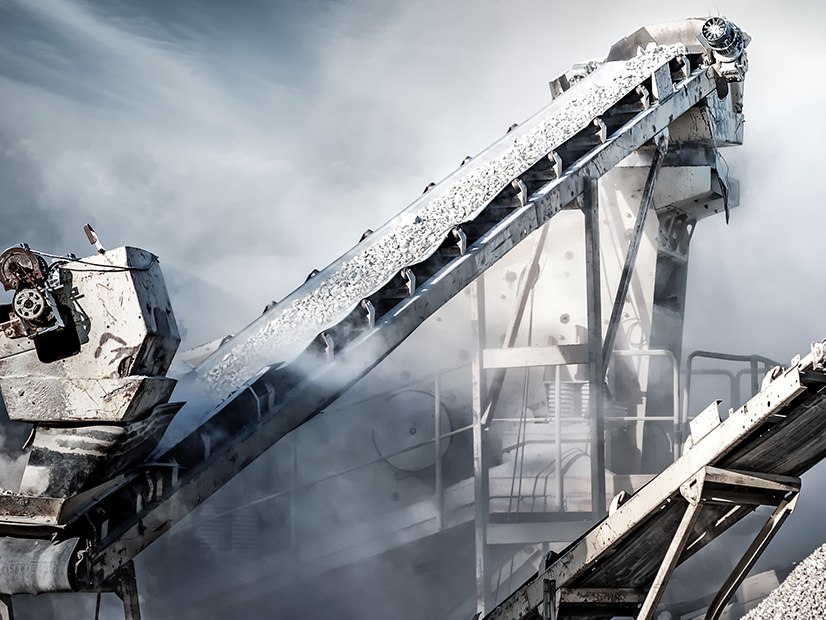
In the global effort to reduce greenhouse gases, companies are advancing technologies that capture and store carbon dioxide emissions as a viable way to decarbonize energy.
On Wednesday, the Northeast Energy and Commerce Association’s Fuels Committee invited experts to explore the current carbon capture and sequestration (CCS) market and its place in the global decarbonization effort.
Here’s a look at some of the experts’ insights from that panel discussion.
CCS vs. Alternatives
Understanding the current role of CCS for climate and energy requires looking at the technological alternatives, according to panel moderator Michael Stern, a chemical engineer at consulting firm Exponent.
Renewable energy, he said, is an “obvious” alternative that has its “merits” and “limitations.”
The reliability of clean generation resources could become uncertain as the effects of climate change worsen, Stern said. Energy storage as a means of balancing uncertain renewable output also has limitations, he added.
There are mature programs that allow companies to compensate for emissions through the purchase of offsets, but they are “not without significant challenges,” Stern said. Some people are concerned that such programs, which include forest carbon offsets, for example, overestimate the amount of CO2 that is stored and the lifetime of that storage.
Direct air capture (DAC), which pulls CO2 from the air, has a measure of flexibility that is not available with CCS, Stern said. CCS grabs CO2 at the source of the emission, so it must be transported, potentially over long distances, to a storage location or secondary market.
A DAC developer, on the other hand, can site a plant near a renewable energy facility to access clean power or near a geological formation for storage. But Stern said that air is a “very dilute source of CO2” compared with point-source emissions, making the economics of DAC more challenging.
Advanced Tech
Cryogenic carbon capture (CCC) is at the leading edge of CCS, providing a path forward for the market that improves cost and efficiency, according to Sustainable Energy Solutions cofounder Larry Baxter.
Sustainable Energy started out commercializing CCC a decade ago, and Chart Industries purchased the company last year. The company is demonstrating the technology around the world with a variety of CO2 sources, Baxter said.
CCC has many applications, such as energy storage and hydrogen production, but Baxter said it is “a game-changing carbon-capture technology.”
The CCC system takes flue gas from any source to produce a liquid CO2 product for sequestration or use downstream. In the cryogenic process, CO2 cools down and forms a solid.
“We separate the solid from the gas and warm everything back up again,” Baxter said. The solid, he added, is pressurized before it warms up so it can form a liquid CO2 as it melts.
That process is not like traditional refrigeration that results in a cold product. “We just use the cold as part of the separation technology,” Baxter said.
One benefit of the CCC system is that it does not require any modification at the point source, Baxter said.
“We think it’s probably the easiest retrofit carbon capture technology we know of, as it requires literally no change of systems upstream,” he said.
It also produces high-purity CO2, potentially meeting beverage-grade standards, which Baxter said are the highest for CO2 purity.
Large-scale CCS
Enbridge (NYSE: ENB), one of the largest pipeline infrastructure companies in North America, is collaborating with companies to develop integrated solutions for CO2 capture, transportation and storage.
Enbridge is working with Capital Power and Lehigh Cement on the Wabamun Carbon Hub Project in Alberta, Canada. That project, according to Enbridge, will be one of the largest integrated CCS projects in the world, potentially avoiding 4 million metric tons of CO2 emissions.
Alberta has good geology for CO2 storage, according to Freddy Sanches, technical manager of market innovation at Enbridge. Having nearby underground pore space where CO2 can be injected “helps with the economics,” he said.
Enbridge is studying geological formations for CO2 storage capacity in Ontario, Canada, and in the U.S. Gulf Coast and Midwest.
“We’re trying to de-risk the geology and learn more about it to see if it’s suitable for CO2 storage because that’s one of the biggest unknowns,” he said.
On the storage front, Enbridge is also studying its gas storage facilities to see if they are suitable for conversion to CO2 storage.
“We’re not converting any of those storage facilities yet, as we still need them for natural gas production, but that is something that we are looking into,” he said.
CCS in Canada
The International CCS Knowledge Center in Canada has reported that the Western Canadian sedimentary basin, which is the epicenter of oil and gas supply in Western Canada, has the largest potential for storage, according to Mark Demchuk, national director of strategy and stakeholder relations for the center.
Canada has almost 400 gigatons of storage capacity, primarily centered in that Western basin, Demchuk said. The Northeast U.S., he added, has similar geologic characteristics for large-scale storage capacity, primarily in the Appalachian and Michigan basins.
De-risking large CCS projects and improving the business case for projects to move forward is a “hot topic” in Canada, Demchuk said. A large-scale project that stores a million metric tons of CO2 per year might cost in the range of $1 billion, depending on the site or industry. For Canada to meet its 2030 CO2 emission reduction target, he said, the country would need a minimum of 15 projects at that scale and cost.
There is no positive investment case for those projects at this time, Demchuk said.
“All levels of government … and all the companies involved recognize that we need to develop the components to support an investable business case if those projects are actually going to happen in the time frame we’re talking about,” he said.

